Lenovo ThinkPad X1 Carbon Ultrabook Review
by Dustin Sklavos on May 15, 2013 12:01 AM ESTDisplay Quality
I don't know about the rest of you, but I'm pretty happy to be getting notebooks in for review that don't have lousy 1366x768 panels. I desperately want to believe this is the direction the notebook market is heading in, though a pair of $1,500+ notebooks don't really constitute a trend, and I'll be a lot happier when $600 notebooks have gotten past 1366x768.
The Lenovo ThinkPad X1 Carbon employs a 14" 1600x900 display standard; Lenovo lists it as "wide viewing angle" but it's still most definitely a TN panel. That said, viewing angles are definitely good, and it exhibits none of the "no sweet spot" issues that plague lower quality displays. Lenovo's pseudo-glossy finish isn't as brilliant as typical glossy finishes are, but it's also not as reflective.
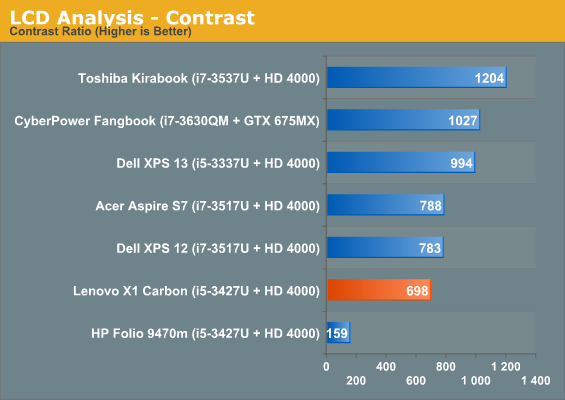

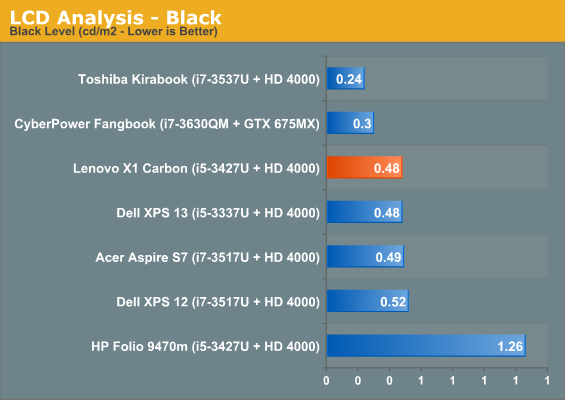

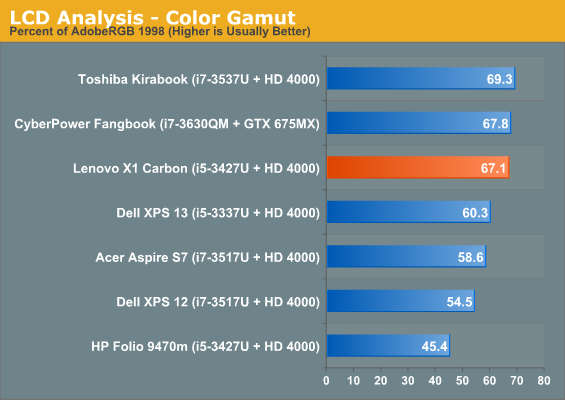
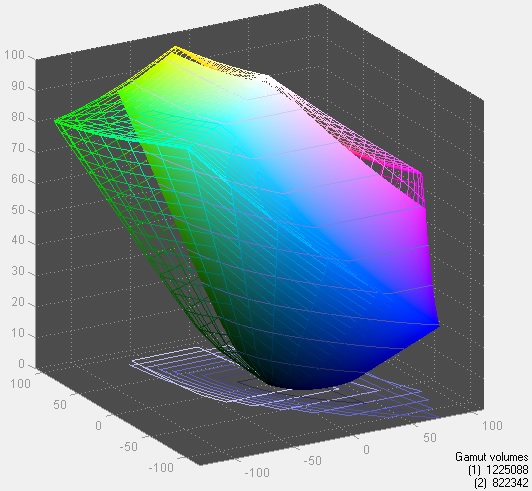
The X1 Carbon's display quality is acceptable, but take a look at the contrast graph to get a really good idea of how much of a difference spending just a little more on a display can make. The HP Folio's display has such horrible black levels that its contrast ratio is actually lower than its maximum brightness. Meanwhile, the X1 Carbon has a display that's both lovely and functional, and 1600x900 is about right for a 14" panel before you get into having to mess with the broken dpi settings in Windows.
Battery Life
While most of the Lenovo ThinkPad X1 Carbon's user experience is at least solid, battery life is one area where it falls horribly short. That Lenovo doesn't offer any extended battery option of any kind turns out to be a major problem.
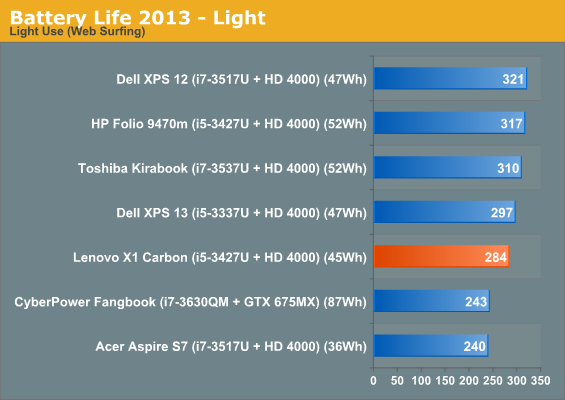
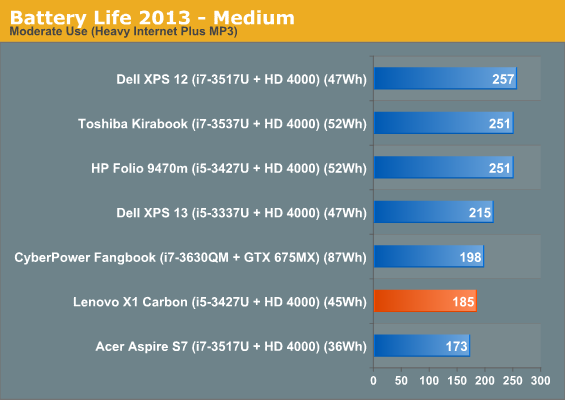
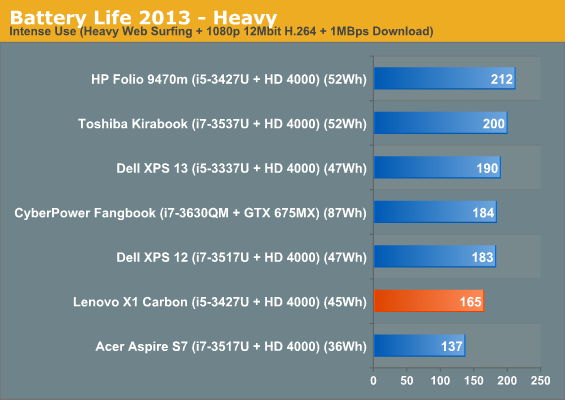
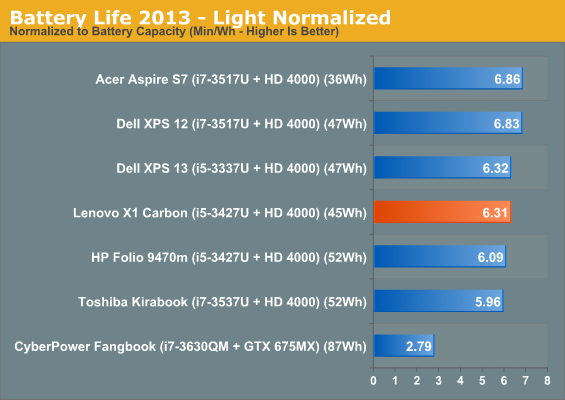
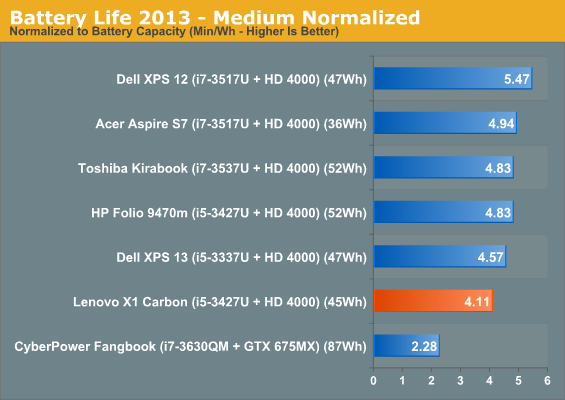

The X1 Carbon's battery life isn't horrible, but it's way out on the bottom end of competitive. Dell's two "prosumer" XPS notebooks both offer superior efficiency and running time, and the XPS 13 in particular can offer you a stellar 1080p IPS display in the process.
Heat and Noise
Sporting a larger chassis than most Ultrabooks, the Lenovo ThinkPad X1 Carbon is able to do a fantastic job of keeping the ultra low voltage Core i5 running cool. There's definitely a high-pitched whine to the fan when it spins up, but it's not especially loud under extreme, sustained load.

Thermally the X1 Carbon is almost boxing under its weight. None of the surfaces of the chassis get hot, and it's actually difficult to get either core of the i5 to break 70C. I think you could probably make a case for using a higher powered CPU in the Carbon's chassis, but I'm honestly happy just to see a notebook that not only doesn't have heat issues, it doesn't even flirt with them.










91 Comments
View All Comments
Dustin Sklavos - Wednesday, May 15, 2013 - link
Not true! Chris Heinonen plays, so there's at least two people. ;)Exodite - Wednesday, May 15, 2013 - link
There are probably more of us than one might initially think. ;)IVIauricius - Wednesday, May 15, 2013 - link
Why do laptop makers keep putting the Ctrl and Fn keys backwards? That is one of the top reasons I purchased a Dell XPS 13 over a MacBook Air 13. Craziness.Greenthum6 - Wednesday, May 15, 2013 - link
I wondered the same before purchasing a Lenovo W520. Fortunately, you can easily switch Fn and Ctrl in BIOS. It takes 5 minutes to memorize the change and I've had zero issues with it since.chubbypanda - Wednesday, May 15, 2013 - link
It's actually the opposite, this is the layout it suppose to be. If needed Lenovo, unlike Apple give you option to switch these two.bji - Wednesday, May 15, 2013 - link
There is no "layout that is supposed to be". However there is historical precedent and Apple and Lenovo are breaking it, for what that's worth.Apple may not give you the built-in option to switch but there are free and easy to use apps that allow you to reconfigure the keyboard on OS X. Within 10 minutes of getting my rMBP I had downloaded and installed such an app and used it to switch the Ctrl and Fn keys and then popped the key caps off of the keyboard and switched them.
bji - Wednesday, May 15, 2013 - link
I should point out that you can't switch the key caps on the Lenovo since they are different sized keys. However on the Mac they are identically sized and so they can be switched with no issue.bji - Wednesday, May 15, 2013 - link
Also may I point out that back in the day when Sun worstations were de rigeur in software development, we used to remap the Control and Caps Lock keys, which on Sun keyboards were for some bizarre reason switched from where they are on a normal PC keyboard.Bob-o - Wednesday, May 15, 2013 - link
Bizarre? The UNIX world always had Control located where PC keyboards have CapsLock. Control is used much more frequently and it's a more natural location. Especially if you are an emacs user.Those of use from that world struggle with modern keyboards and xkb mappings. Luckily I still have my Type 4 and a USB adapter. :-)
bji - Thursday, May 16, 2013 - link
I'm an emacs user and I find control in the bottom left to be very usable. The "pinky pull down" to hit the control key is easy to do. However playing with my keyboard for a few moments I can see where Control where caps lock would be wouldn't even require moving the pinky finger. So I guess it's better, except that pulling the pinky down to hit control is so effortless as to make the point fairly moot.